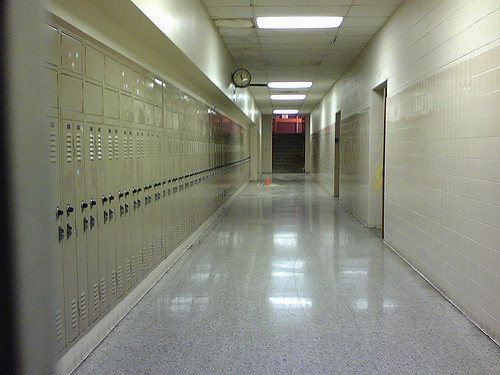
Black students in Oakland public schools face harsher discipline, miss more school, and are likelier to dropout than white males, according to new research.
The Urban Strategies Council conducted three studies analyzing data from the Oakland Unified School District (OUSD). The reports examined three areas – rates of suspension, chronic absenteeism, and dropout risk – that determine the success of its students, and further analyzed the data, breaking it down by race and gender.
The results were clear.
“African American males fare worse than any other gender and ethnic population,” said Urban Strategies Council CEO Junious Williams.
The Urban Strategies Council works in partnership with the school district and the East Bay Community Foundation as part of a larger initiative – the African American Male Achievement Initiative (AAMAI). The AAMAI that aims to enable black males to achieve their full potential by reversing academic and social inequalities.
Nearly one in five students of Oakland public schools is an African American male.
The research determined that during the 2010-2011 school years, 18 percent of African American males were suspended at least once, while only 3 percent of white males were suspended. This reflects a growing body of research that finds students of color are more likely to be expelled or suspended than their white counterparts, as calhealthreport.org recently reported.
A large number of the suspensions, 44 percent, were due to “willful defiance or disruption,” which researchers call a highly subjective offense.
“When you’re talking about something as vague as whether a young person has been defiant, especially when there’s no definition of what that means, you bring to bear the fact that we’ve got the most diverse student population we’ve ever had,” Williams said.
Williams gave the example of how growing up, it was expected in his household to ask questions of adults, whereas that type of behavior might not be acceptable to some teachers.
Williams suggests three possible explanations for the disparity, and he added that it is likely some combination of the three. It may be a difference in treatment – that the African American students are not behaving any differently, but they experience the hand of the system differently. He said it may be behavioral – that the students themselves act out more – or it could be “structural incompatibility” in that the school system is not being as culturally responsive to the needs and background of African American students and others in the population.
Williams said that the reports provided limited information into the variables of student backgrounds, things like socioeconomic status or family composition, that would provide more insight into the best way to intervene.
The analysis also revealed that nearly one in five African American males was chronically absent, missing more than ten percent of the school year. While the overall chronic absence rate in OUSD is high, the rate among black boys was almost twice that, and they were three times as likely to be chronically absent when compared to white boys.
According to Hedy Chang, Director of the non-profit Attendance Works, “the results illustrate the troubling and harsh reality that poor achievement and dropout for African American male students cab be traced back to especially high levels of chronic absence in kindergarten and first grade,” she said in a statement.
The report also found that one-third of African American males were off-course for graduating from high school. These findings were based on an analysis of key measures that varied by school level but included things like attendance, academic performance and suspension.
The warning signs were most prevalent among black males in middle school, where 55% displayed signs of dropout risk.
The reports make multiple recommendations for the district to implement. These include improvements to tracking disciplinary efforts that precede out-of-school suspensions (currently, these are unknown) and developing systems that allow for early interventions for students heading off course.
The district is already making efforts to improve educational outcomes for black male students. In 2010, the school district established an Office of African-American Male Achievement (AAMA) in an attempt to take a strategic approach to the challenges facing African American males, said Chris Chatmon, executive director of the AAMA.
To Chatmon, the information in the reports is nothing new, but he hopes it is a wake-up call for others.
“For me, it’s leveraging this information to create a greater sense of urgency both for folks in the system and for in the community to ask themselves, ‘what are you doing to serve black boys,” he said. “How are we as a community going to address what’s happening within this ecosystem?”





